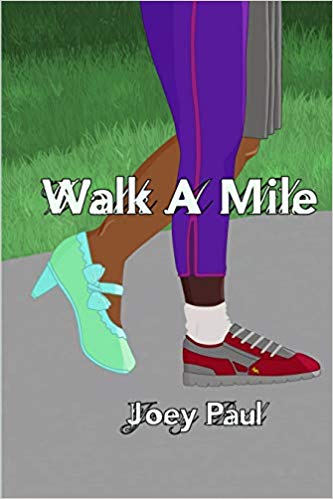Walk a Mile 1st Edition By Joey Paul – Test Bank
Digital item No Waiting Time Instant DownloadISBN-10: 1979513996 ISBN-13: 978-1979513999Author: Joey PaulPublisher : Bug BooksEdition: 1st
In Stock
Original price was: $55.00.$25.00Current price is: $25.00.
Walk a Mile 1st Edition By Joey Paul – Test Bank
Chapter 1 Diversity and Identity 1-1
Chapter 2 Forms of Oppression 2-1
Chapter 3 Social Inequality 3-1
Chapter 4 Race as a Social Construct 4-1
Chapter 5 Aboriginal Peoples 5-1
Chapter 6 Religion 6-1
Chapter 7 Gender and Sexuality 7-1
Chapter 8 Mind and Body 8-1
Chapter 9 Generations and Technology 9-1
Chapter 10 Families 10-1
Chapter 11 Immigration 11-1
Chapter 12 Multiculturalism 12-1
Chapter 13 Practising Diversity 13-1
Test Bank for Walk a Mile, 1st Edition by Joey Paul
The “Test Bank for Walk a Mile, 1st Edition” by Joey Paul is an essential educational resource designed to support both educators and students in mastering the core themes, concepts, and insights presented in this work. This comprehensive test bank complements the textbook by providing a variety of questions that assess and reinforce understanding of the key ideas and discussions covered in “Walk a Mile.” It serves as an invaluable tool for both teaching and learning. Below is a detailed overview of the components and benefits of this test bank:
Overview of Test Bank Content
- Chapter-by-Chapter Organization
- The test bank is meticulously organized to align with each chapter of the textbook. This ensures comprehensive coverage of all critical topics and provides a structured approach to assessment, facilitating easy integration into the curriculum and enabling targeted learning.
- Types of Questions
- Multiple-Choice Questions (MCQs): These questions cover a broad range of knowledge, from basic recall to complex application and critical thinking. Each question includes well-crafted distractors to challenge students’ understanding.
- True/False Questions: These questions assess students’ ability to distinguish between correct and incorrect statements, reinforcing factual knowledge and addressing common misconceptions.
- Fill-in-the-Blank Questions: These questions focus on recalling specific details such as key terms, processes, and important concepts, testing students’ memory and understanding.
- Short Answer Questions: These questions require detailed yet concise responses, evaluating students’ ability to explain key themes and concepts clearly and accurately.
- Essay Questions: These questions assess students’ ability to synthesize and articulate complex ideas, demonstrating a deep understanding of the book’s themes and their broader implications.
- Case Studies and Scenarios: Real-world scenarios and case studies help students apply theoretical knowledge to practical situations, enhancing their critical thinking and problem-solving skills.
- Discussion Questions: These questions prompt students to engage in deeper analysis and discussion of the book’s themes, fostering a comprehensive understanding through dialogue and reflection.
- Difficulty Levels
- Questions are categorized by difficulty to provide a range of challenges and assess students’ proficiency at different levels, including:
- Basic: Testing foundational knowledge and comprehension.
- Intermediate: Requiring application of knowledge to practical scenarios.
- Advanced: Involving critical thinking, analysis, and synthesis of complex ideas.
- Questions are categorized by difficulty to provide a range of challenges and assess students’ proficiency at different levels, including:
- Core Focus Areas
- Introduction to Key Themes: Questions covering the basic principles and scope of the book, including definitions, importance, and historical context.
- Detailed Analysis of Chapters: In-depth questions focusing on each chapter, examining key points, themes, and insights presented by the author.
- Character and Plot Development: Assessing understanding of the characters, their development, and the progression of the narrative.
- Themes and Motifs: Questions on recurring themes and motifs throughout the book, exploring their significance and implications.
- Critical Thinking and Reflection: Encouraging students to critically analyze the book’s content and reflect on its broader impact and relevance.
- Real-World Applications: Examining how the themes and lessons from the book apply to real-world situations and contemporary issues.
- Author’s Perspective and Purpose: Assessing understanding of the author’s perspective, purpose, and the messages conveyed through the book.
- Alignment with Learning Objectives
- Each question in the test bank is aligned with the learning objectives outlined in the textbook, ensuring that assessments are relevant and targeted toward achieving the intended educational outcomes. This alignment helps in accurately measuring students’ progress and comprehension.
- Educational Support and Utility
- For Educators: The test bank provides a comprehensive resource for creating quizzes, exams, and other assessments. It simplifies the process of test creation and ensures consistency and alignment with the curriculum.
- For Students: The test bank serves as a valuable tool for self-assessment and study. It helps students verify their answers, understand their mistakes, and learn the correct approach to applying the knowledge gained from the book.
Benefits of Using the Test Bank
- Enhanced Learning and Retention
- The diverse range of question types and difficulty levels helps reinforce learning through varied and repeated exposure to key concepts, enhancing retention and understanding.
- Preparation for Real-World Applications
- By focusing on real-world scenarios and practical applications, the test bank prepares students for the practical aspects of the book’s themes, ensuring they are ready to apply their knowledge in various settings.
- Comprehensive Assessment
- The test bank allows for thorough and multi-faceted evaluation of students’ knowledge and skills, from basic understanding to advanced application, ensuring a well-rounded educational experience.
- Efficient Teaching Resource
- For educators, the test bank simplifies the process of creating assessments, providing a consistent and reliable tool for evaluating students’ progress and readiness for advanced studies based on the book’s content.
Conclusion
The “Test Bank for Walk a Mile, 1st Edition” by Joey Paul is an essential resource for mastering the core themes and insights presented in the book. It provides structured, comprehensive, and versatile tools for assessing and enhancing students’ knowledge and understanding. By aligning closely with the textbook and emphasizing real-world application, the test bank supports the development of competent, confident individuals ready to excel in their understanding and application of the book’s principles and lessons.


Reviews
There are no reviews yet.